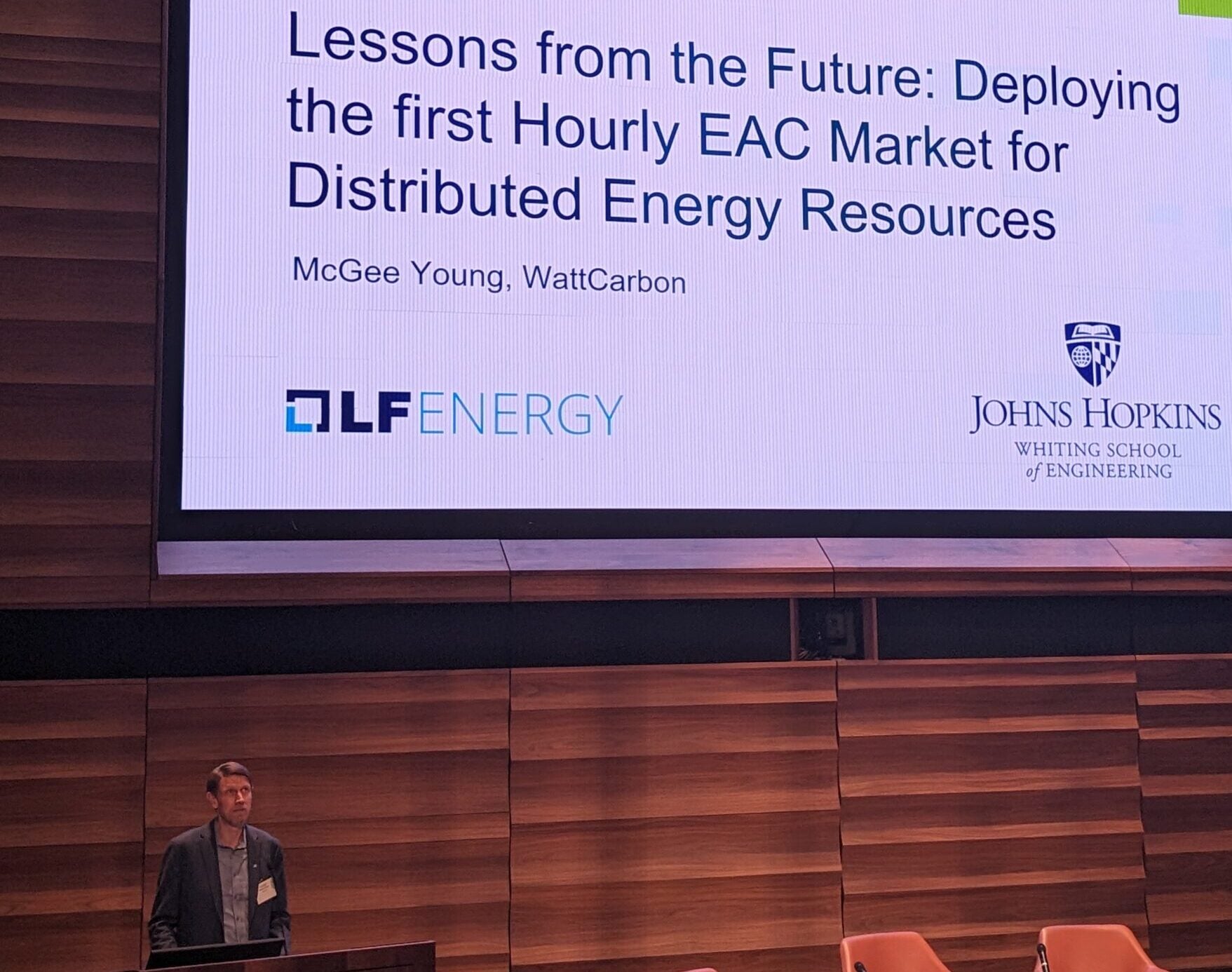Open Sustainability Policy Summit Recap and Video: Deploying the First Hourly EAC Market for Distributed Energy Resources
At the Open Sustainability Policy Summit 2024, McGee Young, founder and CEO of WattCarbon, shared an ambitious vision for revolutionizing the energy sector through the deployment of the first hourly Energy Attribute Certificate (EAC) market tailored specifically for Distributed Energy Resources (DERs) (video follows below). Here are the key takeaways from his insightful presentation.
Introduction to WattCarbon
Young kicked off his session by recounting his journey in the energy sector, from his early involvement with LF Energy to his pivotal role at WattCarbon. He highlighted the inception of WattCarbon’s mission: to build an environmental commodities market focused on decarbonizing buildings, which account for 40% of global emissions.
The 24/7 Clean Energy Framework
A central theme of Young’s talk was the “24/7 clean energy” framework. This concept envisions a world where clean energy is available everywhere, 24 hours a day, seven days a week, 365 days a year. Achieving this goal is challenging, requiring robust market infrastructure that leverages DERs to meet energy demands during peak periods when renewables like wind and solar are offline.
Market Infrastructure for DERs
Young emphasized the importance of creating market infrastructure around DERs. Traditional carbon offset markets and renewable energy credits do not adequately address the unique opportunities presented by DERs. WattCarbon aims to fill this gap by developing a system that values both the production of clean energy and the reduction of energy consumption during specific times.
Key Components for the New Energy System
To realize the vision of a 24/7 clean energy system, Young identified three crucial components:
- Data Infrastructure: Essential for consistent measurement and reporting, particularly for distributed energy resources. This includes creating data platforms that can accurately calculate and track energy efficiency and demand response.
- Market and Regulatory Framework: Implementing systems that incentivize participation and facilitate the valuation of DERs. Young noted the success of corporate Power Purchase Agreements (PPAs) in bringing new wind and solar projects online as a model to emulate.
- Capital Infrastructure: Financing the transition to clean energy through innovative mechanisms. Young highlighted the need for tools that make it economically viable for end-users to adopt technologies like heat pumps without incurring prohibitive upfront costs.
The Role of Energy Attribute Certificates (EACs)
A significant portion of the presentation was dedicated to explaining the role of EACs in the new market. EACs serve as legal contracts and property rights that represent the environmental attributes of a specific amount of energy. WattCarbon’s system assigns unique serial numbers to every watt-hour of electricity, ensuring precise tracking and valuation of energy produced or saved by DERs.
Addressing Market Challenges
Young candidly discussed the challenges in standardizing and valuing EACs. Different buyers have varying preferences, necessitating a balance between standardization and flexibility. Additionally, the market currently lacks sufficient liquidity, which WattCarbon aims to address through strategic partnerships and pilot projects.
Pilot Projects and Future Steps
WattCarbon has already begun piloting their system, procuring significant CO2 reductions from heat pump projects and other DER initiatives. Young stressed the importance of developing a consensus around transaction units and ensuring that all claims related to EACs are independently verified.
